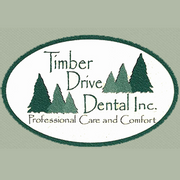
Many patients are nervous when they learn that they need scaling and root planing since the procedure sounds complex. However, this common treatment is more like an in-depth teeth cleaning, and can be powerful in the fight against periodontal disease.
Your Scaling & Root Planing Questions Answered
1. Why do you need scaling and root planing?
Plaque is a fine biofilm that collects on your teeth after you eat or drink, and tartar is calcified plaque. Unfortunately, plaque and tartar can harbor bacteria that emit enamel-eroding acids and toxins as they grow and reproduce, causing gum tissue to pull away from the teeth, forming pockets that can harbor additional germs and food particles. Bacterial acids can weaken the surface of dental enamel and cause cavities that pave the way for infections inside the tooth.
2. What happens during scaling and root planing?
Before your dentist performs this thorough teeth cleaning, the targeted areas will be numbed with a local nerve block. After you are comfortable, your dentist will use either a manual or ultrasonic scaler to gently remove plaque and tartar from above and below the gum line.

During planing, your dentist will smooth out the surface of the tooth and remove a small amount of cementum, which is the calcified covering that protects your tooth root. Before finishing the procedure, the tooth and periodontal pocket is carefully cleaned and flushed with freshwater, and a topical antibiotic may be applied to help with any infections.
3. What benefits does the procedure offer?
Scaling and root planing can improve breath and reduce your risk of advancing periodontal disease, which is known to cause tooth loss. Additionally, the entire procedure is non-invasive, and has been shown to reduce periodontal pocket depth.
4. What should you expect during recovery?
You should be able to resume your normal daily activities immediately following scaling and root planing. Since gums can be sore after the anesthetic wears off, eat soft foods, like soup, pasta, or smoothies, until you feel comfortable.
If your dentist has prescribed an additional topical antibiotic, pain reliever, or oral antibiotic, take your medication exactly as prescribed. Brush and floss the teeth gently, and don't skip dental follow-up visits.
Whether you have had problems with a toothache, bad breath, or irritated gums, turn to Timber Drive Dental in Rhinelander, WI, for a teeth cleaning. For more than 20 years, this trusted team of dental professionals has been helping their customers enjoy healthier, more comfortable smiles through dental cleanings, sealants, fillings, and complex restorations, like dental implants. Learn more about how they can help by visiting their website or by giving their office a call at (715) 365-1800.
About the Business
Have a question? Ask the experts!
Send your question

